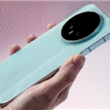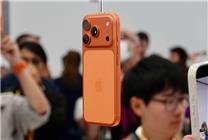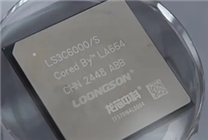iPhone 17 Series: Durability Concerns and Material Challenges
- Reports of scratches and durability issues have surfaced since the launch of the iPhone 17 series.
- The switch from titanium to aluminum alloy in the frame has raised questions about its sturdiness.
- Apple faces scrutiny over the materials used and the potential need for improvements in future models.
It has been one month since the launch of the iPhone 17 series, and discussions surrounding its performance and design have intensified. While the initial excitement surrounding unboxings and reviews was palpable, recent scrutiny has highlighted some significant drawbacks of this latest model. The striking resemblance of the iPhone 17 to a “large flat power bank” has not gone unnoticed, but it’s the material concerns that are taking center stage in conversations among users and tech enthusiasts alike.
One of the most alarming issues reported by users involves scratches on both the frame and back panel. Many individuals have noted that even minimal contact with everyday objects such as keys or desktop debris can quickly mar the surface of their new devices. This problem appears to be especially pronounced for the darker color variants of the phone. Unlike its predecessors, which utilized titanium alloy for their frames, the iPhone 17 series has opted for an aluminum alloy. While this change contributes to the phone being lighter and cooler to the touch, it also compromises its resistance to scratches and impacts.
The choice to use aluminum alloy, significantly cheaper than titanium, has resulted in many speculating that it may be a factor behind the lower price point of the iPhone 17 Pro, priced a thousand yuan less than its predecessor. This shift in material raises concerns over both durability and the perceived value of the product. Users are left questioning whether this was a calculated decision by Apple to cut costs or a genuine attempt to innovate.
Even display units in offline retail stores have not been immune to these issues. For instance, a dark blue display model, which has been on exhibit for less than a week, has already accumulated multiple scratches on its back panel. Investigations by Apple revealed that this is primarily due to the aging of the MagSafe bracket, which seems to transfer materials to the back of phones, leading to easily identifiable marks. Although Apple has since updated the brackets and applied protective silicone covers in stores, the timing still feels remarkably coincidental.
Further complicating the conversation around durability, a prominent tech reviewer recently exposed another issue within the iPhone 17 Pro. Their durability test revealed that the curved edge adjacent to the camera lens is particularly vulnerable to scratching. Apple initially defended the design, stating that the material used for this edge is akin to that of the back cover and frame, claiming it possesses good durability after testing. However, skepticism remains regarding the truth of this assertion.
As various “scratch incidents” come to light, consumers are left pondering the overall durability of the iPhone 17 series. Is this a case of bloggers exaggerating facts for attention, or are the inherent weaknesses of the aluminum alloy material genuine concerns? Each user will likely have their own perspective and judgments based on their experiences and values. It is crucial for Apple to acknowledge these shortcomings and to consider improvements in their subsequent product iterations.
In conclusion, while the iPhone 17 series introduces exciting features, the discussions surrounding its material quality and durability cannot be overlooked. The transition to aluminum alloy has sparked important conversations, and Apple’s next steps will be critical in determining the long-term perceptions of this flagship device.








